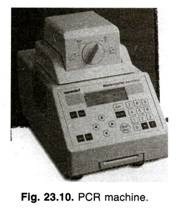ADVERTISEMENTS:
In this article we will discuss about Adhatoda:- 1. Botanical Name of Adhatoda 2. Family of Adhatoda 3. Description 4. Distribution 5. Uses 6. Average Dose.
Contents:
- Botanical Name of Adhatoda
- Family of Adhatoda
- Description of Adhatoda
- Distribution of Adhatoda
- Uses of Adhatoda
- Average Dose of Adhatoda
ADVERTISEMENTS:
1. Botanical Name of Adhatoda:
ADHATODA ZEYLANICA Medic. Syn. A.vasica Nees. Justicea adhatoda Linn
2. Family of Adhatoda:
ACANTHACEAE
ADVERTISEMENTS:
3. Description of Adhatoda:
Adhatoda is a tall shrubs, up to 2.5 mtr. high; younger parts tomentose. Leaves are opposite, elliptic or elliptic-lanceolate, accuminate, obtuse or acute at base, entire, up to 18 cm long; petiole 1.5 – 2.5 cm. long; secondary veins 10 – 13 pairs; tomentose when young, glabrous afterwards.
Inflorescence a dense terminal spike up to 7.5 cm. long on a peduncle up to 8 cm. long, or a fascicle at the axil of upper leaves, bracteate; bracts broadly elliptic, 5 – 7 — nerved from the base, longer than calyx, bracteoles oblong — lanceolate, 1-nerved, ciliate at the margin. Flowers sub sessile, bisexual, zygomorphic, hypogynous. Calyx shortly campanulate with 5 lanceolate acute lobes, up to 1.2 cm long.
Corolla bilabiate, white with pinkish violet tinge at the throat up to 3 cm. long, minutely pubescent outside; tube up to 1.2 cm. long, narrow at base, much inflated above; upper lip ovate-oblong, notched at the middle, lower lip 3-lobed, recurred, oblong with rounded tip, the middle one broader; lips of corolla imbricate.
Stamens 2, inserted at the throat of corolla; filaments hairy at base; anthers 2-celled; cells oblong, minutely apiculate, one cell little higher up than the other. A cup-like disc usually present.
Ovary bicarpellary syncarpous, 2-celled, superior, tomentpse; ovules 2 in each cell; style filiform, subclavate above; stigma entire. Fruit a clavate capsule upto 2 cm. long, contracted below into a solid stipe. Seeds 1 or 2, 5-6 mm. sub orbicular, compressed, glabrous and rugose.
4. Distribution of Adhatoda:
This is found in the plains of India in wild condition and is cultivated in a small scale in village shrubberies. Outside India it is found in Bangladesh, Burma, Malaya and Sri Lanka.
ADVERTISEMENTS:
Parts used: Leaves; fresh or dry.
Constituents: Alkaloid vasicine and adhatodic acid.
5. Uses of Adhatoda:
It is an expectorant and in asthma is antispasmodic. It is used in the form of a liquid extract in alcohol or freshly expressed juice. Powder of dry leaves is also used.
ADVERTISEMENTS:
6. Average Dose of Adhatoda:
Alcoholic extract — 1.3-4 ml; fresh juice — 4-15 ml.
Powder — 18 grains.

